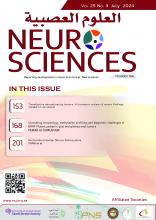Abstract
Objectives: To investigate the clinical and genetic features in a cohort of Chinese families with neurofibromatosis type 1 (NF1).
Methods: The clinical information of 21 patients with NF1 in 10 families was retrospectively analyzed. To broaden the genetic spectrum of NF1, multiplex ligation-dependent probe amplification analysis was performed first, followed by the whole-exome sequencing, in order to identify pathogenic or potentially pathogenic variants of NF1 gene in 10 unrelated Chinese families.
Results: Nine different NF1 variants were identified in all 10 families. Of these, 7 were known pathogenic variants and included the exon 1 deletion, exons 1-58 deletion, c.5401C>T (p.Q1801*), c.2291-2A>C, c.484C>T (p.Q162*), c.4922G>A (p.W1641*) and c.1019_1020del (p.S340Cfs*25). The 2 novel variants were c.5197T>C (p.S1733P) and c.783_797delinsC (p.K261Nfs*25). The p.S1733P variant was classified as a variant of uncertain significance, while p.K261Nfs*25 was classified as pathogenic. Hence, the positive detection rate of NF1 variants was 100% (10/10). While the truncating variants were responsible for 60.0% (6/10) of the cases, the splicing variant was responsible for 10% (1/10) of the cases.
Conclusion: We identified 2 novel heterozygous variants (c.5197T>C and c.783_797delinsC) in the NF1 gene, which broadens the genetic spectrum of the NF1 gene.
Footnotes
Disclosure. The authors declare no conflicting interests, support or funding from any drug company.
- Received January 8, 2024.
- Accepted May 31, 2024.
- Copyright: © Neurosciences
Neurosciences is an Open Access journal and articles published are distributed under the terms of the Creative Commons Attribution-NonCommercial License (CC BY-NC). Readers may copy, distribute, and display the work for non-commercial purposes with the proper citation of the original work.






